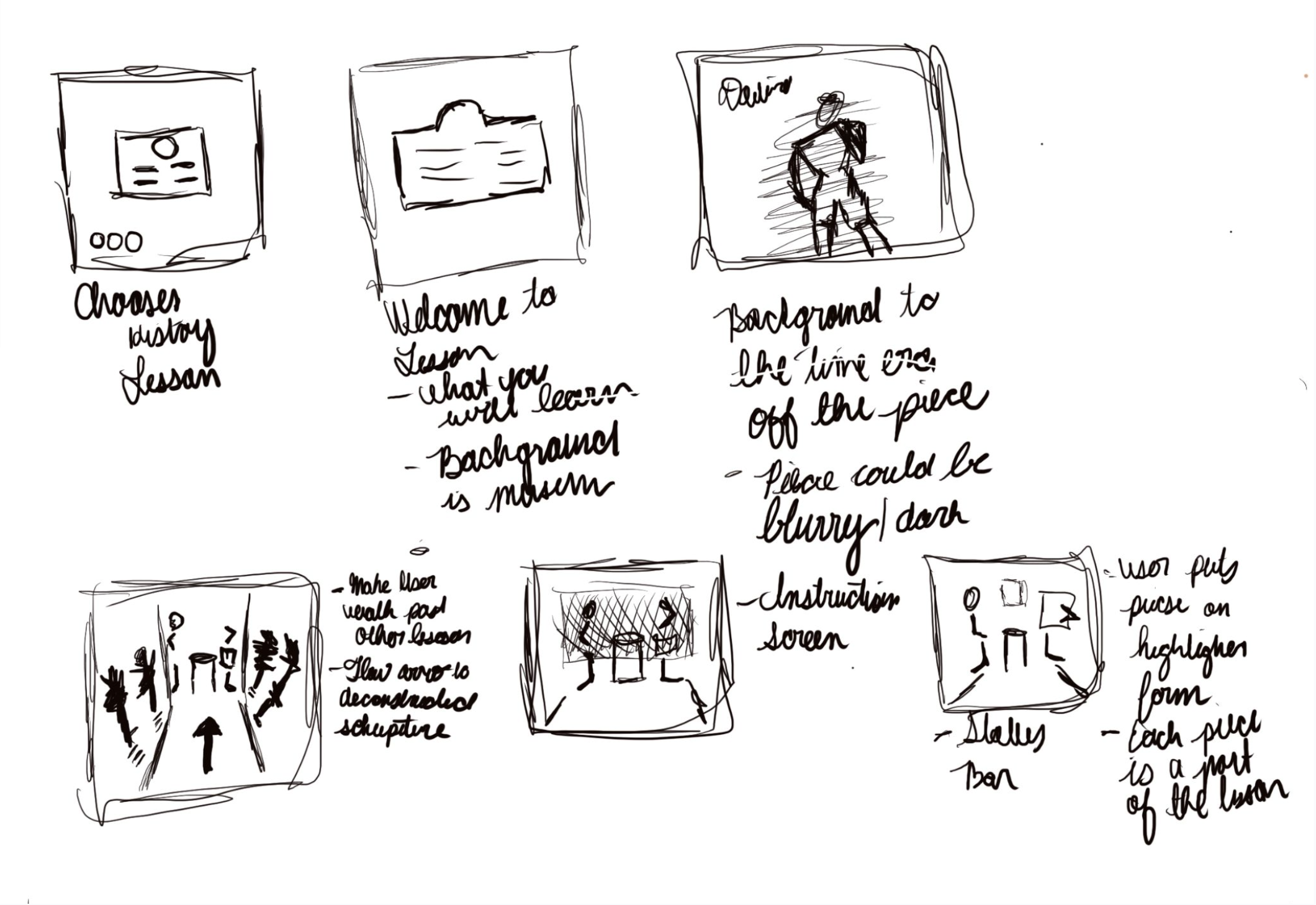ARTiFact: VR Puzzle Learning for Art History
Role
UX/UI Designer, Interaction Designer
Timeline
4 weeks
ARTiFact is a VR-based educational experience that reimagines how students engage with art history. Through interactive puzzle mechanics, users assemble iconic sculptures while unlocking historical insights. The project was inspired by traditional art history classes and designed to transform passive learning into immersive, hands-on exploration.
Objective:
To create a meditative, seated VR puzzle experience where students learn about classical art through building and discovery. The goal was to foster emotional engagement and retention by blending historical storytelling with spatial interaction.
Art history education often feels passive and inaccessible. Students struggle to engage with dense text and abstract timelines.
ARTiFact addresses this by allowing users to physically build artworks in VR while receiving narrated context—turning art into something tactile, memorable, and emotionally resonant.
The Problem-
Concept & Theme
-
Designed for seated VR experiences ideal for classrooms or home study
-
Each session is calm, meditative, and paced by the user
-
Aims to replace pressure with curiosity and celebration of learning.
-
Visuals draw inspiration from gallery spaces, classical marble sculptures, and Renaissance design.
User Flow & Scene Progression
Puzzles follow a linear narrative, like curated exhibitions—each one revealing a deeper layer of knowledge.
The user doesn’t jump around randomly—they move chronologically through selected time periods and art movements.
App Launch → Opening credits inspired by 90s educational media
Home Menu → Choose course (Foundations, Renaissance, Innovation)
Welcome Scene → Narrated introduction and purpose of the lesson
Mini Documentary → Timeline + narrated visuals for historical context
Gallery Entry → VR scene of fragmented sculpture (e.g., Michelangelo's David)
Instruction Screen → Control walkthrough and puzzle overview
Puzzle Assembly → Snap pieces in place; correct placements trigger facts and narration
Lesson Recap → Completion visuals and knowledge reflection
Navigation → Return to menu or continue to next lesson
Interaction Mechanics
Snap Assembly: Puzzle pieces float within reach; users grab and align using XR controllers
Feedback Design: Correct placement glows and chimes; errors trigger haptic buzz and red glow
Narrated Learning: Each correct placement reveals facts about the sculpture or time period
Progress Tracking: Auto-save and visible progress bars help orient users
User Testing Insights
Early tutorials are essential—users need confidence with basic interaction
•
Users benefited from clearer structure—identifiable puzzle parts improved orientation
•
Early tutorials are essential—users need confidence with basic interaction • Users benefited from clearer structure—identifiable puzzle parts improved orientation •
Reflection
ARTiFact grew from a personal love of art and a desire to make history feel alive. Designing a VR experience that respects academic content while making it playful and immersive taught me the power of pacing, environmental storytelling, and user-controlled progression. With more time, I would expand the app with new art movements, dynamic environments, and culturally diverse collections.







